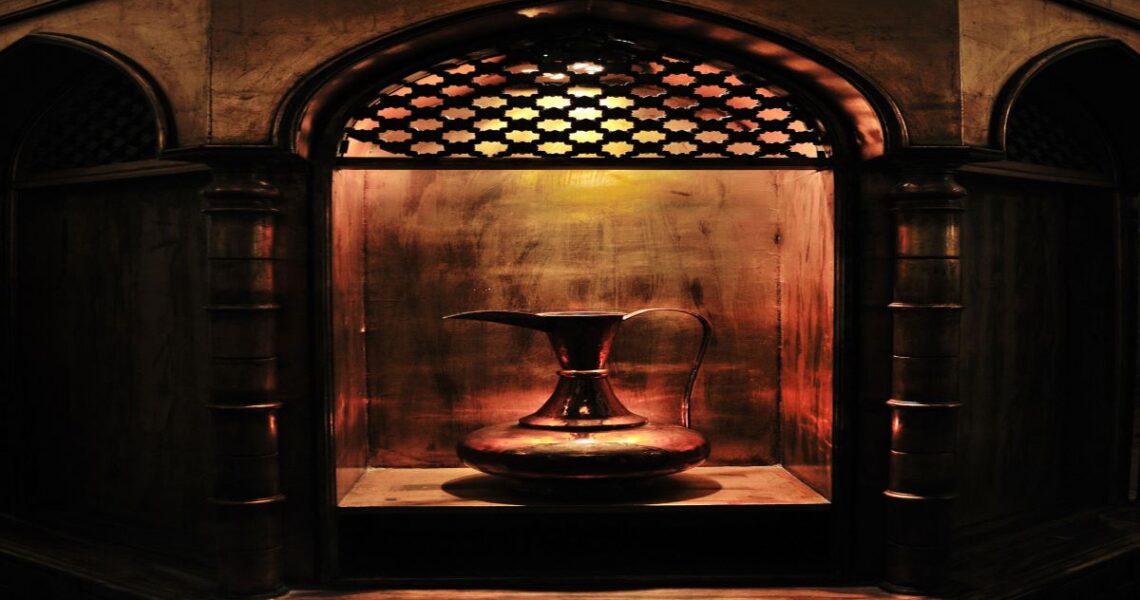Hero of Alexandria and his Magical Jugs:
The most famous and successful of the scientists and engineers from the 1 st century was Hero (Heron) of Alexandria, who was conjuring up all kinds of weird and wonderful mechanical gadgets and steam engines, that both entertained the royalty and dumfounded the faithful in the temples. The ancestry of Hero is unknown. He came from Alexandria in Egypt, but Carl Boyer, a historian of science and mathematics, has said that his work and mathematics demonstrate that Hero must also have had Parthian and Greek influences.
The date of Hero’s life and work is also unknown but extracts from Columella, a Roman agriculturalist, demonstrate that he was alive in AD 62. The current consensus of opinion is that Hero was born between AD 10 and 20, and died between AD 70 and 100. Hero is known to have been resident in Alexandria, Egypt, and probably studied at the great Mouseion (or Musaeum), the Temple of the Muses. The Mouseion was less of a museum or a temple as we would understand it, and more of a university, a center of research and education that included the Great Library of Alexandria.
Hero
In addition to making machines for the temples, Hero also designed and made a host of wonderful machines from automatic doors (operated by lighting a fire on the altar), to slot machines, life-sized robots, mechanical singing birds, self-trimming wicks for lamps, an odometer or distance-measuring device, the mechanism for a siphoned flushing toilet, and a highly effective fire engine. He also produced the mechanical equivalent of a woman being sawn in half, with the sword instead cutting through the neck of a mechanical horse, while the head of the horse remained firmly but inexplicably fixed to its body. Such was this skill and novelty that he was known as Michanikos, the ‘Machine Man’.
In short, Hero was the Leonardo da Vinci of his day; a man whose skill and knowledge spanned the many sciences, and whose vision eclipsed the greatest minds of his day. Like Leonardo, Hero was centuries, if not millennia, ahead of his time; a man who could have ushered in the Industrial Revolution during the first century. AD, some sixteen centuries before it actually happened. Here we have a remarkable individual, a man whose contraptions could utterly amaze and dazzle the public. However, like Leonardo, this skill did not go unnoticed by the aristocracy and the priesthood. For here was a man who could convince the common people that god was actually present in a temple. For how else could these icons and animals move and speak?
Judaism
Thus, it is entirely possible that one of Hero of Alexandria’s devices was used by a new sect of. Judaism in the 1 st century, and this cunning device became rather famous in later centuries and millennia. And we can be fairly certain that this did indeed happen, because among. Hero’s many contraptions designed for entertainment. He created several different trick jars and jugs that, through ingenious internal compartments. Plumbing, siphons and air-holes, a magician could alternate between the pouring of water or wine from the same vessel. An original account and image of this device is contained in. Hero’s treatise on siphons, entitled ‘A Vessel from which Wine or Water may be made to flow, separately or mixed’ .
This is said to be one of the primary miracles that Jesus performed, and yet it is highly likely that. It was a simple mechanical device based upon the principle of the syphon. And we have a complete description of the design and operation of this same device from Hero himself.
Does this description sound familiar? Hero built these magical jars and jugs to entertain the aristocracy. It was simply a jest, an entertaining party-piece for the host of a party. But it would seem
likely that the. Catholic Church has used an account of this well-known party-trick as a corner-stone of this new belief system.
